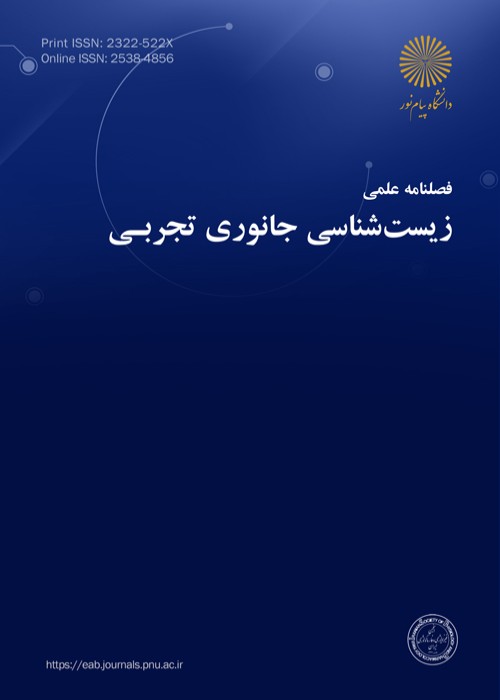A Review of the Biological Status, Population Threats and Habitat Management of the Iranian Brook Salamander Paradactylodon persicus in Iran
Author(s):
Article Type:
Research/Original Article (دارای رتبه معتبر)
Abstract:
Persian Salamander (Persian Brook Salamander Paradactylodon persicus) is one of the unique genetic treasures of Iranian amphibians whose Hyrcanian forests of northern Iran are the last end of its southwestern distribution in Asia. Until 2019, two separate species including the Iranian Salamander P. persicus in the west and center and the salamander of Gorgani P. gorganensis in the east of Hyrcania were introduced, but based on the NGS and phylogenetic sequencing data, these salamanders are classified as the single species of the Iranian salamander Paradactylodon persicus. The eastern population is Critically Endangered (CR) and the central and western population is Near Threatened (NT) on the red list of the International Union for Conservation of Nature (IUCN), and it is necessary to planning of conservation programs. Based on the guidelines proposed by Species Survival Working Group of the International Union for Conservation of Nature (IUCN/SSC), this research identifies the threats and provides management plan in the form of strategic programs for the conservation and management of the Iranian Salamander population. The most important threats to the species include sample collection, the presence of domestic and wild animals, destruction of springs, lack of water resources (decreased water flow) and easy access to the habitat. The most important strategies for the conservation and management of Iranian Salamanders is 1) to identify threats and provide solutions to reduce the effects of each threat on the species and habitat, 2) identify new habitats, monitor the population and assess the status of the habitat, 3) scientific studies on various biological and ecological aspects, and create a database and 4) raising the level of awareness, knowledge and attracting the participation of stakeholders in the conservation of the species and habitat. The results of this study will be used in the management of Iranian Salamander habitat and population, reducing the effects of threats, revising management plans and developing cooperative conservation.
Keywords:
Language:
Persian
Published:
Quarterly Journal of Experimental Animal Biology, Volume:11 Issue: 4, 2023
Pages:
15 to 29
magiran.com/p2622488
دانلود و مطالعه متن این مقاله با یکی از روشهای زیر امکان پذیر است:
اشتراک شخصی
با عضویت و پرداخت آنلاین حق اشتراک یکساله به مبلغ 1,390,000ريال میتوانید 70 عنوان مطلب دانلود کنید!
اشتراک سازمانی
به کتابخانه دانشگاه یا محل کار خود پیشنهاد کنید تا اشتراک سازمانی این پایگاه را برای دسترسی نامحدود همه کاربران به متن مطالب تهیه نمایند!
توجه!
- حق عضویت دریافتی صرف حمایت از نشریات عضو و نگهداری، تکمیل و توسعه مگیران میشود.
- پرداخت حق اشتراک و دانلود مقالات اجازه بازنشر آن در سایر رسانههای چاپی و دیجیتال را به کاربر نمیدهد.
In order to view content subscription is required
Personal subscription
Subscribe magiran.com for 70 € euros via PayPal and download 70 articles during a year.
Organization subscription
Please contact us to subscribe your university or library for unlimited access!




